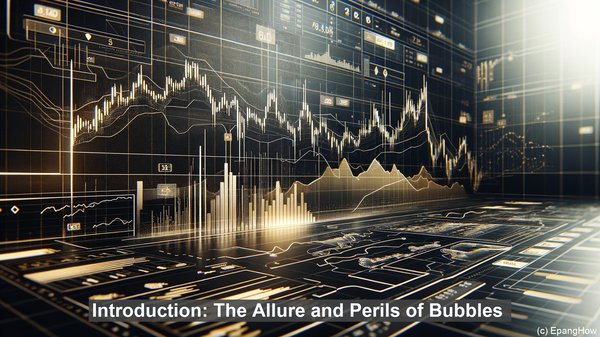Introduction: The Allure and Perils of Bubbles
Hello, and welcome to our article on asset bubbles and market bubbles. Bubbles in financial markets have captivated investors and analysts for centuries. They offer the promise of extraordinary gains, but also the risk of devastating losses. However, not all bubbles are the same. Today, we’ll explore the key distinctions between asset bubbles and market bubbles, shedding light on their unique characteristics and implications.
Defining Asset Bubbles: Focusing on Specific Investments
An asset bubble is a situation where the price of a particular asset, such as real estate, stocks, or cryptocurrencies, becomes significantly detached from its intrinsic value. This detachment is often driven by speculative buying, fueled by the expectation of further price appreciation. As more investors join in, the demand for the asset surges, driving prices even higher. The classic example of an asset bubble is the dot-com bubble of the late 1990s, where internet-related stocks experienced an unprecedented surge in value, only to crash spectacularly in the early 2000s.
Market Bubbles: A Broader Phenomenon
While asset bubbles are confined to specific investments, market bubbles encompass a broader range. A market bubble occurs when the overall market, such as the stock market or the housing market, experiences a significant and sustained increase in prices, detached from the underlying fundamentals. Market bubbles often involve multiple assets, with investors pouring money into various sectors, driven by a general optimism and the fear of missing out. The most infamous market bubble in recent history is the housing bubble that triggered the global financial crisis in 2008.

Drivers of Bubbles: From Speculation to Herd Mentality
Both asset bubbles and market bubbles are driven by a combination of factors. Speculation plays a crucial role, with investors buying assets not based on their intrinsic value or income potential, but solely with the expectation of selling them at a higher price in the future. Additionally, the herd mentality often comes into play, with investors following the crowd, fearing that they might miss out on the gains. This collective behavior further fuels the bubble, as more and more investors join in, driving prices to unsustainable levels.
Implications: The Boom and the Bust
Asset bubbles and market bubbles have significant implications, both during their expansion phase and when they eventually burst. During the boom phase, the economy often experiences a surge in activity, with increased investments, job creation, and a general sense of optimism. However, this prosperity is often illusory, as it’s based on inflated asset prices rather than genuine economic growth. When the bubble bursts, the consequences can be severe. Investors who bought at the peak face substantial losses, and the broader economy can suffer from a downturn, as seen in the aftermath of the 2008 financial crisis.

